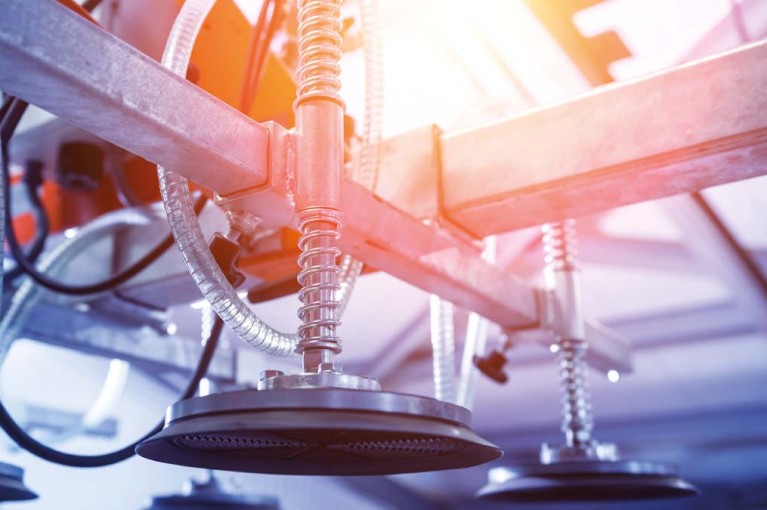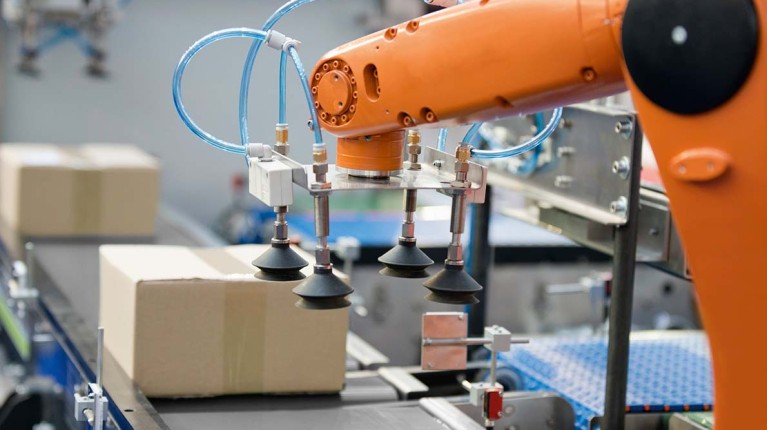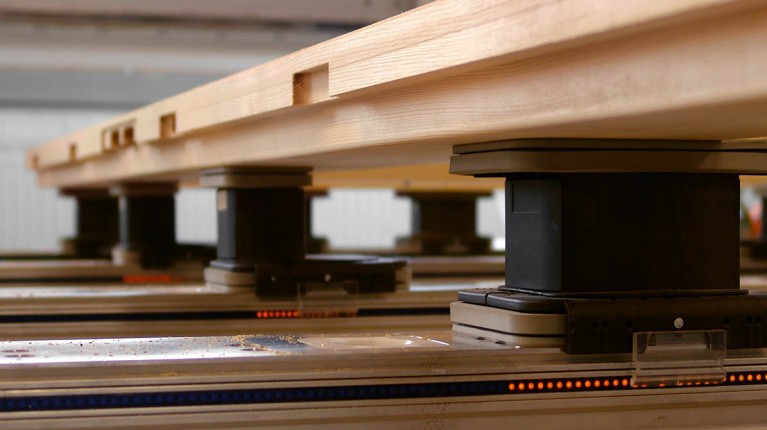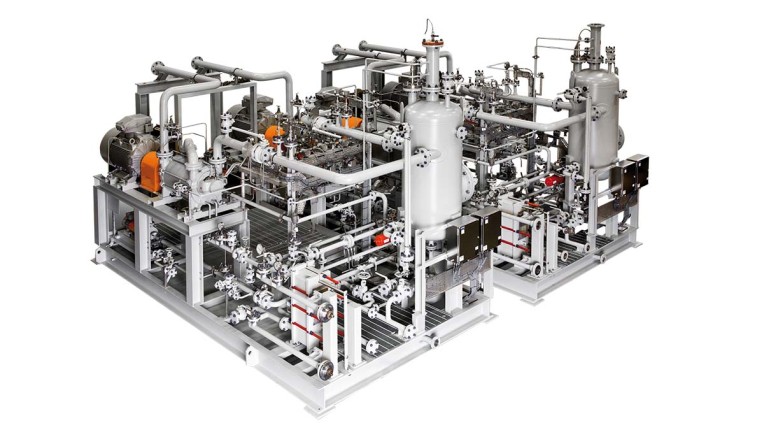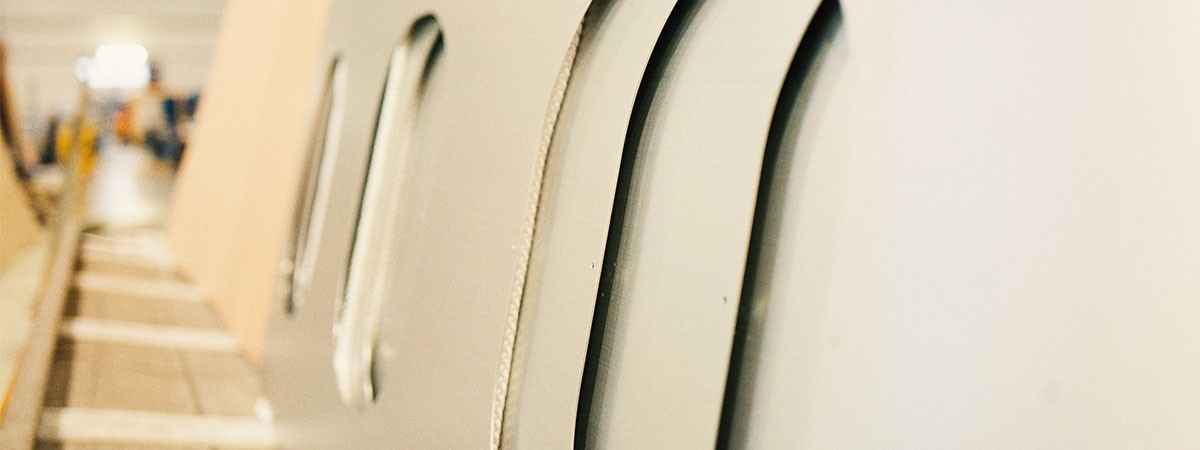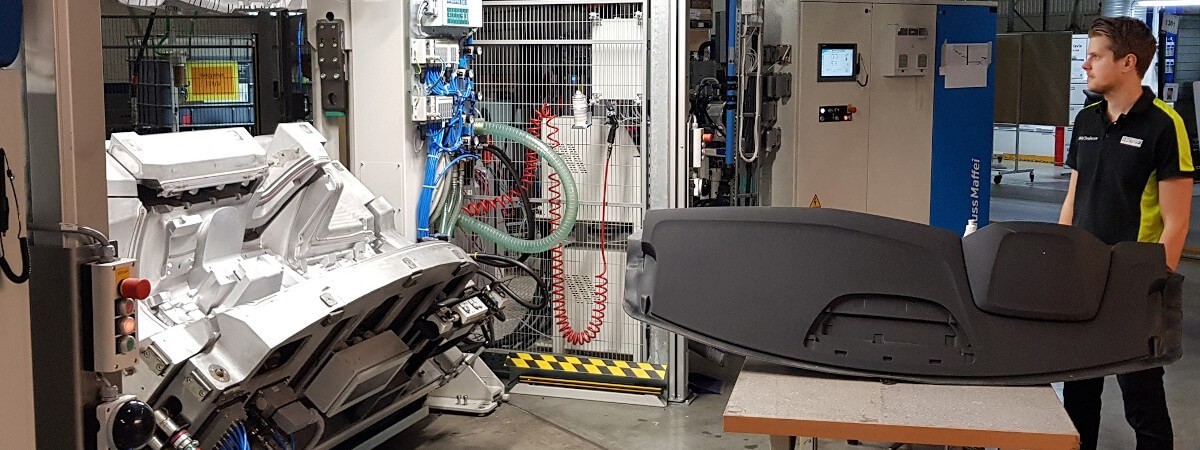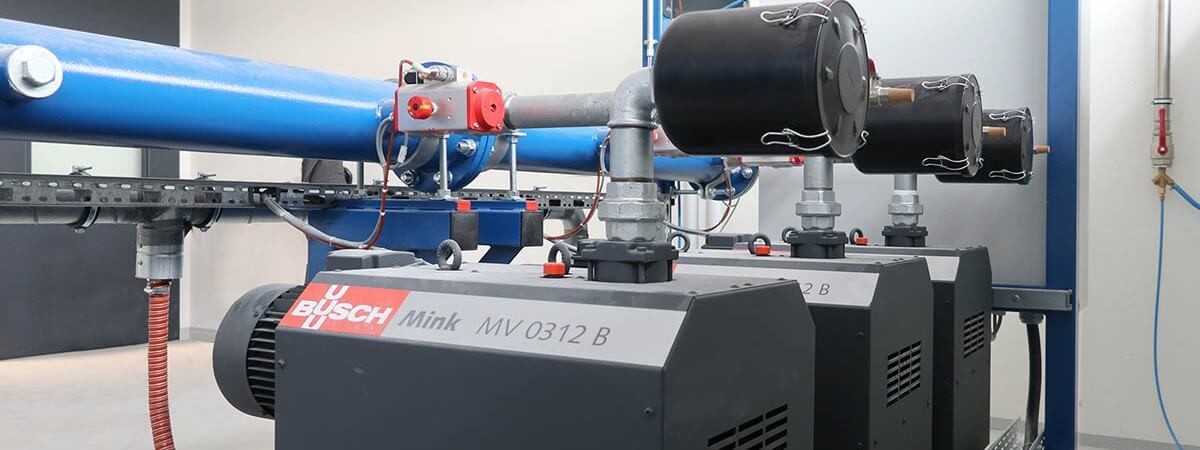How does handling and lifting with vacuum work?
Nowadays, it is inconceivable to imagine modern production processes without handling and lifting goods with the help of vacuum. How else would it be possible to stack cardboards quickly and reliably, to move glass panels, hold wooden components for milling, or load and unload heavy items from ships or vehicles?The idea is as simple as ingenious.
Vacuum technology is therefore used in many automated production processes. For example, in woodworking to move wooden parts through the entire production line and to hold them in place on the machining equipment. But also for pick and place applications in the electronics, food and packaging industry. And even in the printing industry, to transport individual sheets of paper without wrinkling them.
